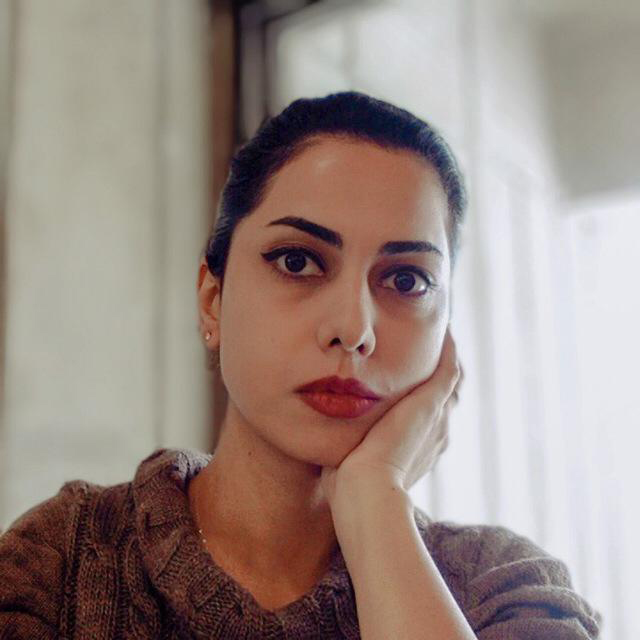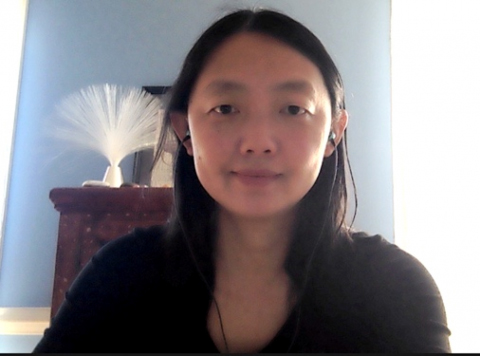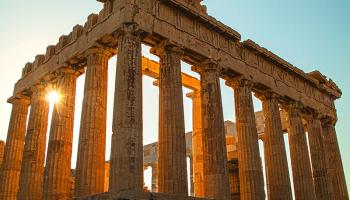Candles, Pomegranates and Lanterns: Celebrating Lesser-Known Winter Holidays

In Ancient Rome, people would give candles to their friends and family every December on Saturnalia. Households in Iran, Turkey and Afghanistan celebrate the winter solstice by eating dishes with pomegranate. Lunar New Year, a 15-day celebration of the coming spring, is the most important holiday in China.
In the United States, holidays like Christmas and New Year’s Day tend to outshine other celebrations. But there are a bevy of days around the world bringing family and friends together.
As Hanukkah winds down and many begin gearing up for Christmas and New Year’s, UVA Today talked with a few experts about some winter holidays that don’t get as much attention in the United States.
Saturnalia
This Ancient Roman holiday began as most Roman holidays did: as an anniversary celebration of the temple for the agricultural god Saturn, observed every year on Dec. 17. The holiday was celebrated with public sacrifices of meat, banquets and a ceremony in which Romans would cut the woolen ties that symbolically bound the statue of Saturn.
“This gradually grew into a more general celebration at home,” John Miller, Arthur Stocker Professor of Classics at the University of Virginia, said. “Removing the symbolic bonds on the statue was a release.”

Giving gifts at Christmas could be related to an ancient Roman celebration called Saturnalia, according to John Miller, Arthur Stocker Professor of Classics. (Photo by Bill McDonald)
Saturnalia was even called a “feast of liberation.” Enslaved people were temporarily liberated, though historical accounts vary on what liberation meant. Moral rules were loosened, so activities like gambling were allowed on Saturnalia.
“One of the symbols in ancient art for that day was dice,” Miller said.
The holiday still has significance today, even though it’s not widely celebrated, Miller said. The tradition of giving gifts at Christmas might be related to gift-giving during Saturnalia. Today, you can count on your relatives to give you socks; in Ancient Rome, you’d likely get candles as a gift.
“We don't know exactly when Christmas began to be celebrated as the birth of Christ on Dec. 25. But like Saturnalia, it morphed from being a strictly religious celebration to a more general celebration that’s now a global phenomenon.”
Yalda Night
The name of this Persian holiday, celebrated in Iran, Azerbaijan, Tajikistan and Afghanistan, is translated as “birth” in English. Occurring every year on the winter solstice, it marks the birth of Mithra, the sun god.
“On this night, believed to be the year’s longest, the forces of evil are thought to be at their strongest. However, following this night, the days start to lengthen, symbolizing light’s triumph over darkness, signifying the sun god’s victory over evil forces,” said Maryam Zehtabi, an assistant professor and lecturer in women, gender and sexuality studies and Middle Eastern and South Asian languages and cultures.
Persian families gather to celebrate the coming of longer days and brighter futures. Extended families come together and stay up late. Food plays an integral role in the celebration; as many as 40 dishes are served.

Light triumphing over darkness is the central theme of the Persian holiday, (Contributed photo)
“Pomegranates and dishes featuring them are central, symbolizing birth, life, fecundity and fertility,” Zehtabi said.
Watermelons are another staple, since they’re believed to protect people from overheating and disease in the coming months.
Another tradition is divination using the works of the 14th-century poet Hafiz. An elder member of the family will choose a page at random from a book of Hafiz’s poems and look for clues to the future in the verses. Before central heating was commonplace, people would gather around a korsi, a table covered with a blanket with a heater inside. The korsi would be laid with food for people to enjoy.
Lunar New Year
On the first new moon of the lunar year, Chinese families gather to share a feast and honor their ancestors. Because the holiday is based on the lunar calendar, it happens on a different date every year. It lasts 15 days, though most people return to work after the seventh or the eighth day. The next Lunar New Year celebration begins Feb. 10, ringing in the Year of the Dragon.

The Lunar New Year is celebrated on the first new moon of the new lunar year, often with a thorough housecleaning, decorations and special foods, says Charles Laughlin, professor of East Asian studies. (Contributed photo)
People observe the holiday several ways. “These include a thorough housecleaning, long journeys home for those who work far from their hometowns, shopping for decorations and special New Years’ foods,” Charles Laughlin, professor of East Asian studies, said.
Lunar New Year is celebrated in China, South Korea, Vietnam and cities across the world with significant Chinese populations. How people celebrate depends on their location, according to Ran Zhao, director of the Chinese language program at UVA. People in northern China tend to eat ravioli-like dumplings, whereas southerners eat hot pot and sweet tangyuan rice flour balls filled with sesame, red beans or peanut paste in soup.

Lunar New Year is celebrated in China, South Korea, Vietnam and cities across the world with significant Chinese populations, with celebrations differing according to location, says Ran Zhao, director of the Chinese language program at UVA. (Contributed photo)
Fireworks, originally believed to drive away evil spirits, are a distinctive part of the celebration. Many cities have banned them out of environmental and safety concerns, but that has not stopped people.
“Some families will go as far as a different town just so their kids can have fun with the firecrackers as they did in their own childhood,” Laughlin said.
More recently, people have taken to watching a lengthy TV program on New Year’s Eve after the family dinner. The lantern festival happens on the 15th day, when houses are decorated with beautiful red lanterns.









